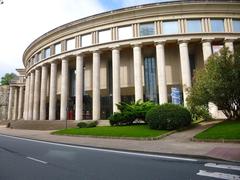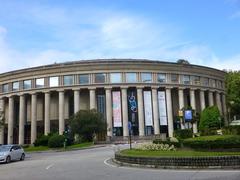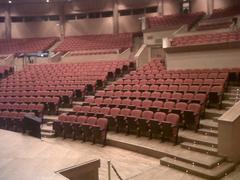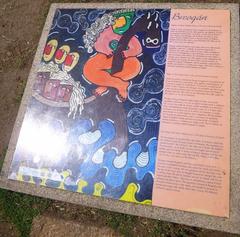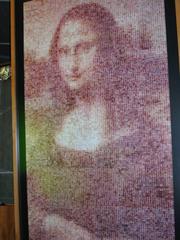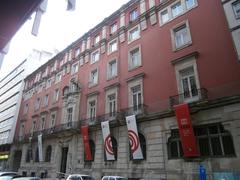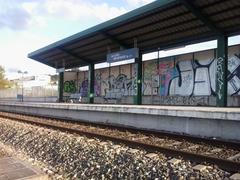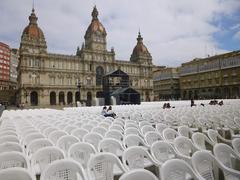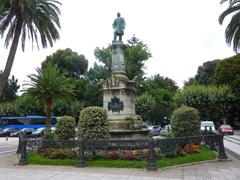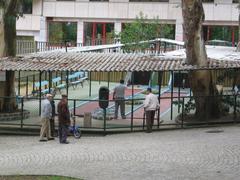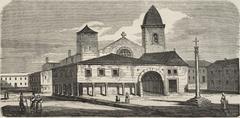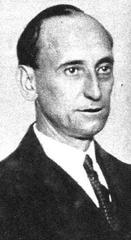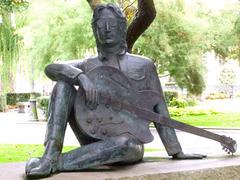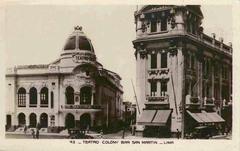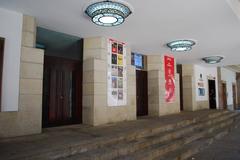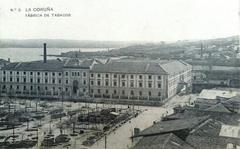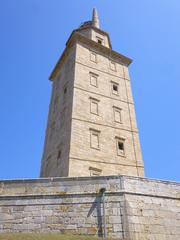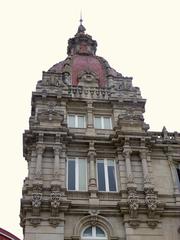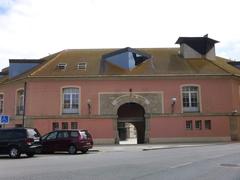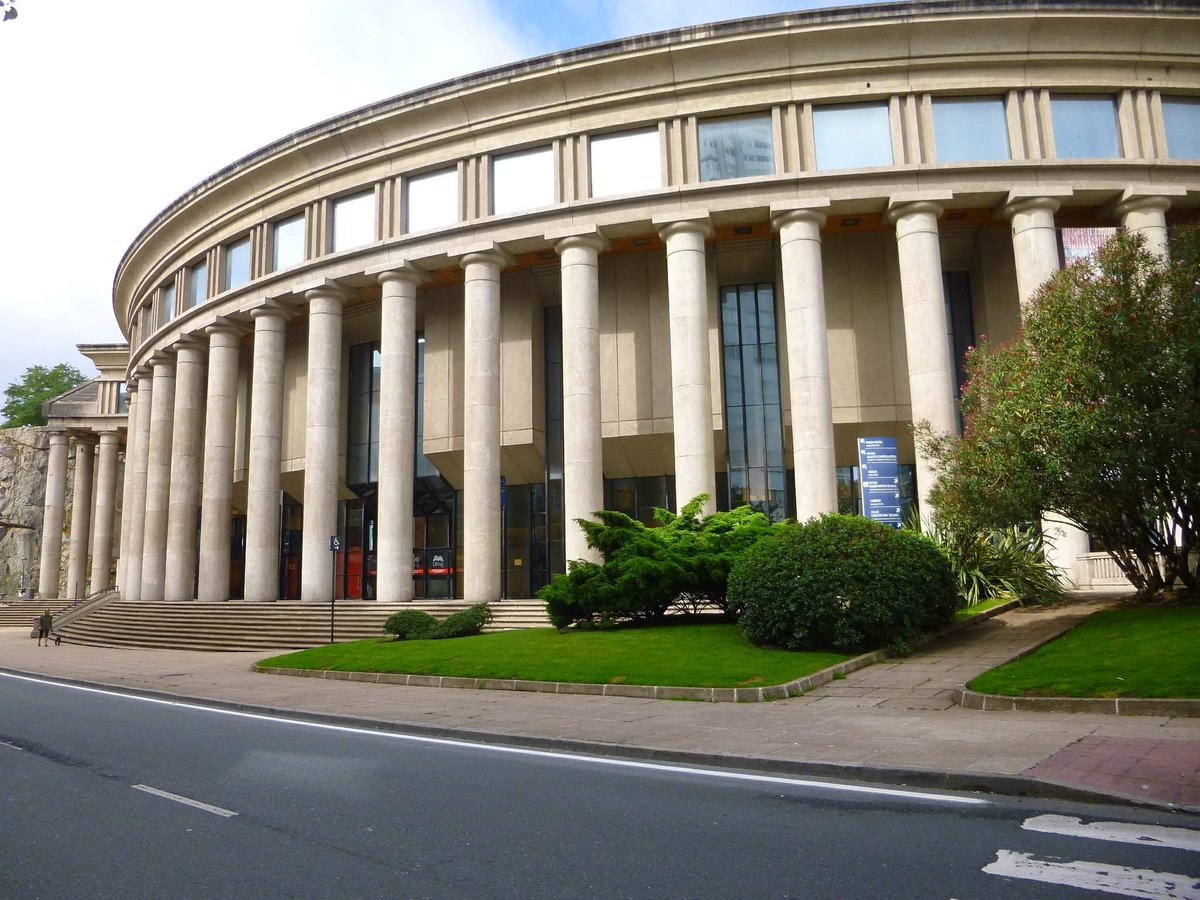
Comprehensive Guide to Visiting Palacio De La Ópera A Coruña, Spain
Date: 17/08/2024
Introduction
Welcome to our comprehensive guide on visiting the Palacio De La Ópera in A Coruña, Spain. The Palacio De La Ópera is a landmark of profound cultural and architectural significance, serving as a testament to the city’s rich heritage. Inaugurated in 1989, this postmodern marvel was designed by the Taller de Arquitectura y Urbanismo and has since become an iconic symbol of A Coruña. Its unique architectural features, including a semicircular floor plan and a façade adorned with 32 smooth columns topped with glass triglyphs and metopes, contribute to its reputation as one of the city’s most recognizable structures (Wikipedia).
Since its inception, the Palacio De La Ópera has played a pivotal role in A Coruña’s cultural scene. It became the home of the Symphony Orchestra of Galicia in 1992, further solidifying its status as a premier venue for performing arts. The Palacio De La Ópera hosts a wide range of events, from traditional opera and ballet to contemporary dance and experimental performances, making it a versatile and dynamic cultural hub (A Coruña Convention Bureau).
This guide aims to provide you with all the essential information you need to plan your visit, including historical context, ticket prices, visiting hours, nearby attractions, and travel tips. Whether you’re an architecture enthusiast, a history buff, or simply planning your next cultural trip, this article covers everything you need to know about experiencing the best of what the Palacio De La Ópera has to offer.
Table of Contents
- Introduction
- History of Palacio De La Ópera A Coruña
- Visitor Information
- Special Events and Guided Tours
- Photographic Spots
- FAQ
- Conclusion
- Sources
History of Palacio De La Ópera A Coruña
Inception and Early Years
The idea for the Palacio de la Ópera was conceived in the 1980s as part of a broader initiative to enhance the cultural infrastructure of A Coruña. The building was officially inaugurated in 1989, marking a new era for the city’s cultural scene (Wikipedia).
Architectural Design and Construction
The Palacio de la Ópera’s design is a testament to the postmodern movement, featuring a semicircular floor plan and a façade with 32 smooth columns topped with triglyphs and metopes made of glass. This unique design element contributes to its recognition as one of the most iconic structures in A Coruña (Wikipedia).
Opening and Initial Performances
Opening its doors in 1989, the main theatre, with a seating capacity of 1,805, quickly became the epicenter of performing arts in A Coruña. The inaugural performance featured Verdi’s opera, Il Trovatore, setting high standards for future events (Facts.net).
Establishment of the Symphony Orchestra of Galicia
In 1992, the Palacio de la Ópera became the home of the Symphony Orchestra of Galicia. Founded by the Ayuntamiento de La Coruña, the orchestra plays a pivotal role in the city’s musical landscape, attracting diverse audiences (Wikipedia).
Evolution and Modernization
The Palacio de la Ópera has undergone numerous renovations to maintain its state-of-the-art status, accommodating events ranging from traditional opera and ballet to contemporary dance and experimental performances (A Coruña Convention Bureau).
Cultural Significance and Community Engagement
Beyond performances, the Palacio de la Ópera is a hub for community engagement and cultural education, supporting local talent and offering programs, workshops, and outreach initiatives (Facts.net).
Notable Events and Performances
The venue has hosted numerous notable events, including Puccini’s La Bohème in 2024, featuring tenor Celso Albelo and soprano Miren Urbieta-Vega, directed by Danilo Coppola (Palacio de la Ópera).
Landmark by the Sea
Situated near the coastline, the Palacio de la Ópera offers breathtaking sea views, enhancing its appeal and significance as an iconic symbol of A Coruña (Facts.net).
Future Prospects
The Palacio de la Ópera remains dedicated to pushing the boundaries of artistic expression and fostering innovation in the performing arts, ensuring its place at the forefront of contemporary trends (InSpain.wiki).
Visitor Information
Visiting Hours
The Palacio de la Ópera is open to visitors from 10 AM to 6 PM on weekdays, and from 12 PM to 8 PM on weekends. It is closed on public holidays.
Tickets
Tickets for performances can be purchased online through the official website or at the venue’s box office. Prices vary depending on the event, with discounts available for students and seniors.
Travel Tips
Visitors are encouraged to use public transportation, as parking near the venue is limited. The nearest bus stop is just a five-minute walk away.
Nearby Attractions
While visiting the Palacio de la Ópera, tourists can explore nearby attractions such as the Tower of Hercules, the Domus Museum, and the beautiful beaches of A Coruña.
Accessibility
The venue is wheelchair accessible, with designated seating areas and facilities for guests with disabilities.
Special Events and Guided Tours
The Palacio de la Ópera offers guided tours that provide an in-depth look at the building’s architecture and history. Special events, including festivals and themed performances, are held throughout the year.
Photographic Spots
Visitors can capture stunning photos of the Palacio de la Ópera from various vantage points, particularly from the nearby coastline, which offers panoramic views of the building against the backdrop of the sea.
FAQ
What are the visiting hours for Palacio de la Ópera?
- The visiting hours are from 10 AM to 6 PM on weekdays, and from 12 PM to 8 PM on weekends.
How to buy tickets for Palacio de la Ópera?
- Tickets can be purchased online through the official website or at the box office.
Is the venue wheelchair accessible?
- Yes, the Palacio de la Ópera is fully accessible, with designated seating and facilities for guests with disabilities.
Conclusion
The history of the Palacio de la Ópera in A Coruña is a rich tapestry of architectural innovation, cultural significance, and community engagement. From its inception in the late 20th century to its current status as a premier cultural venue, the Palacio de la Ópera has played a pivotal role in shaping the artistic landscape of A Coruña. Its commitment to promoting local talent, fostering community engagement, and embracing contemporary artistic trends ensures that it will continue to be a cultural beacon for years to come.
Call to Action
For more information and updates on upcoming performances, download the mobile app Audiala, check out other related posts, and follow us on social media.
References
- Wikipedia. (n.d.). Palacio de la Ópera (La Coruña). Retrieved from Wikipedia
- Palacio de la Ópera. (n.d.). Retrieved from Palacio de la Ópera
- A Coruña Convention Bureau. (n.d.). Palacio de la Ópera. Retrieved from A Coruña Convention Bureau
- Facts.net. (n.d.). 16 Surprising Facts About El Palacio De La Opera. Retrieved from Facts.net
- InSpain.wiki. (n.d.). Palacio de la Ópera. Retrieved from InSpain.wiki
